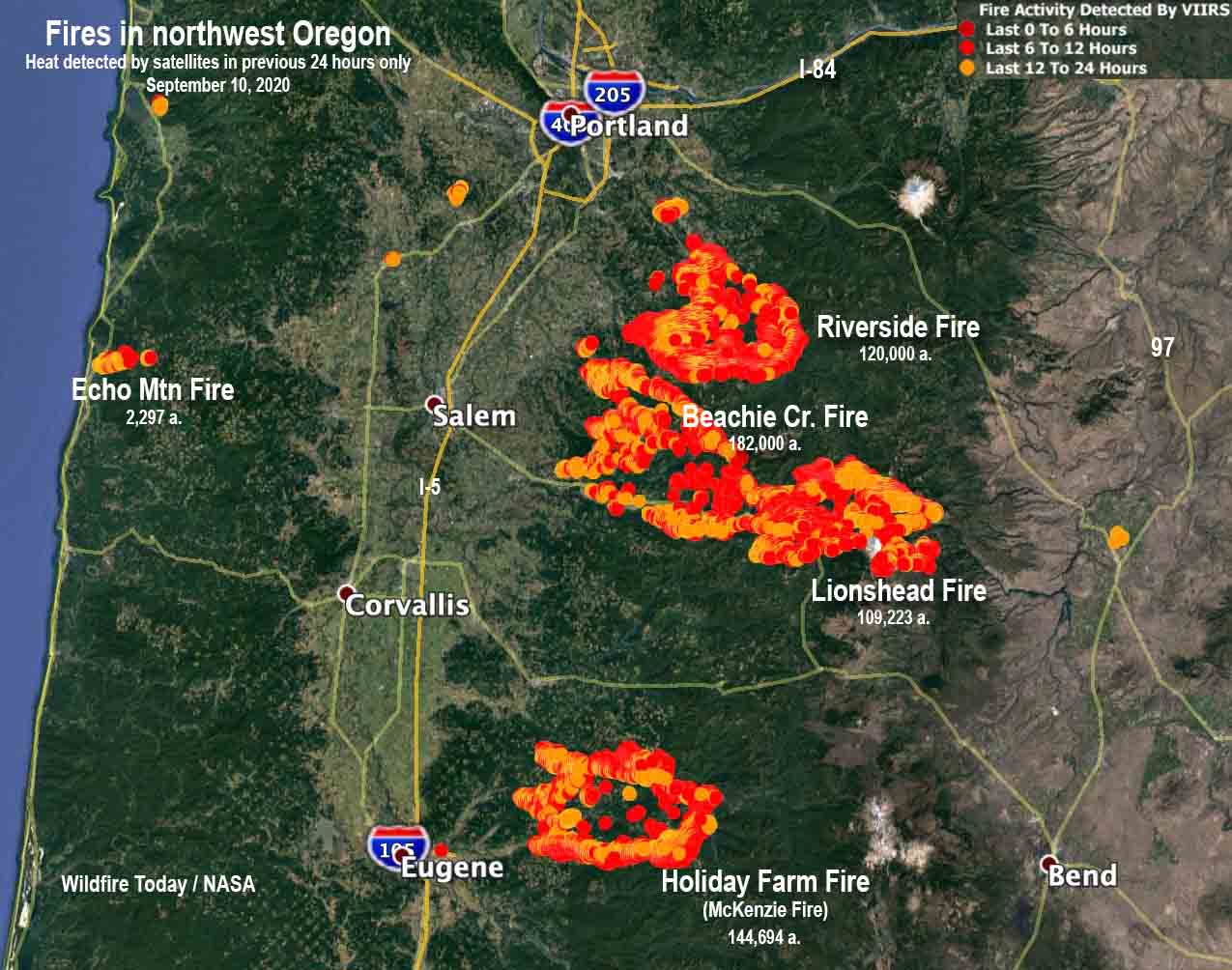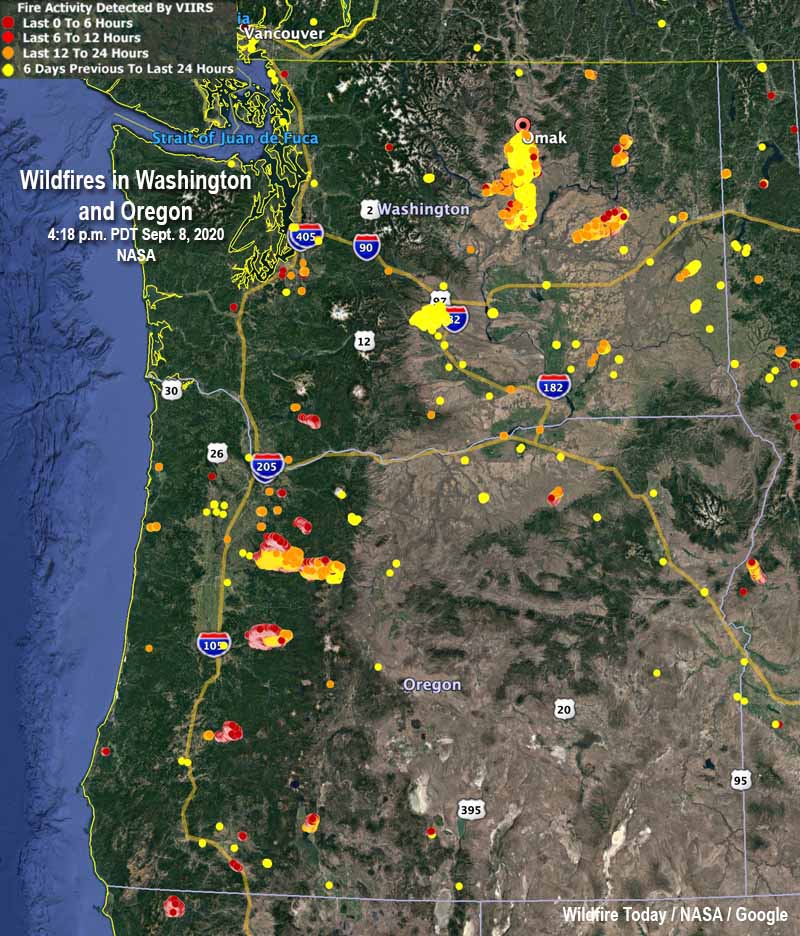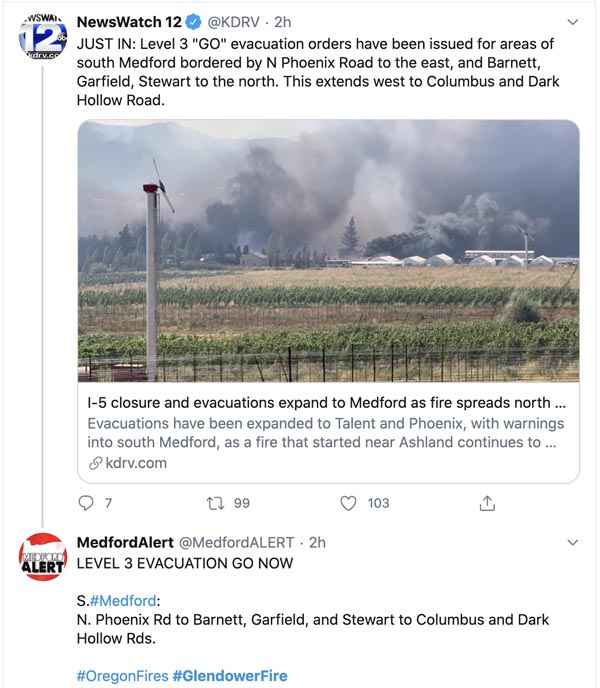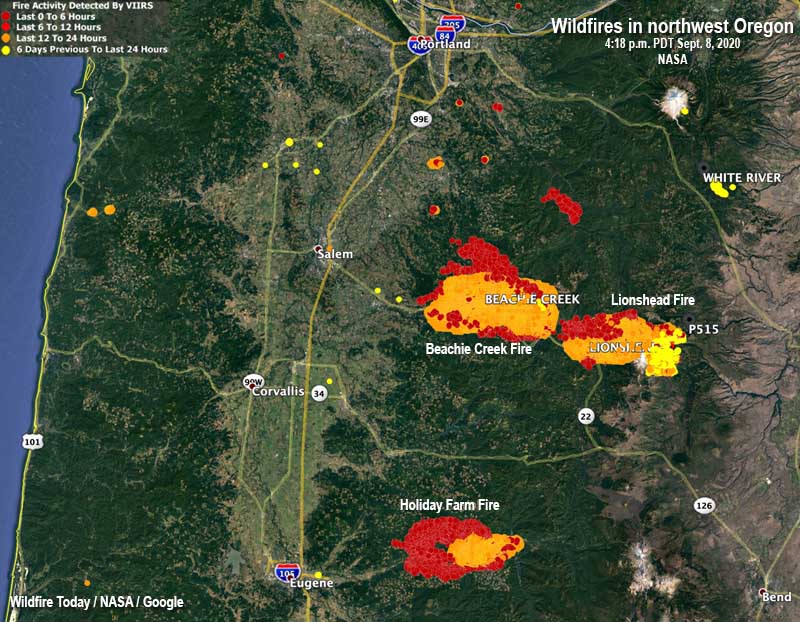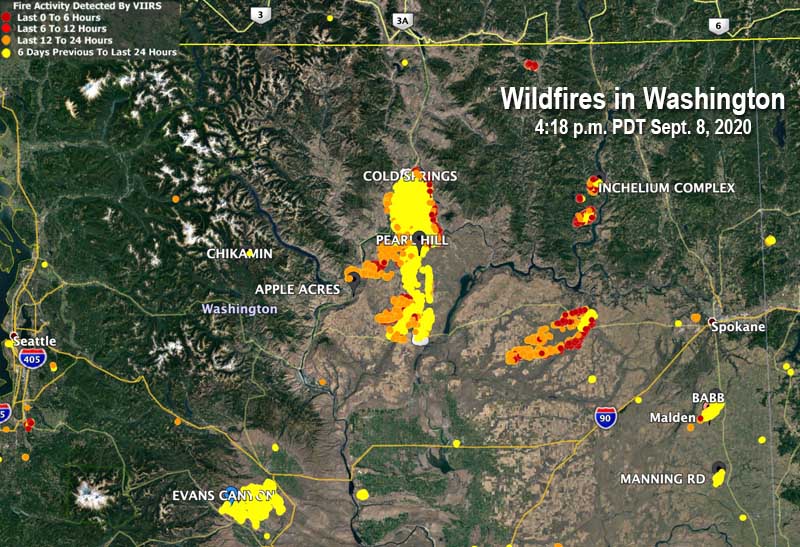September 10, 2020 | 9:42 p.m. PDT
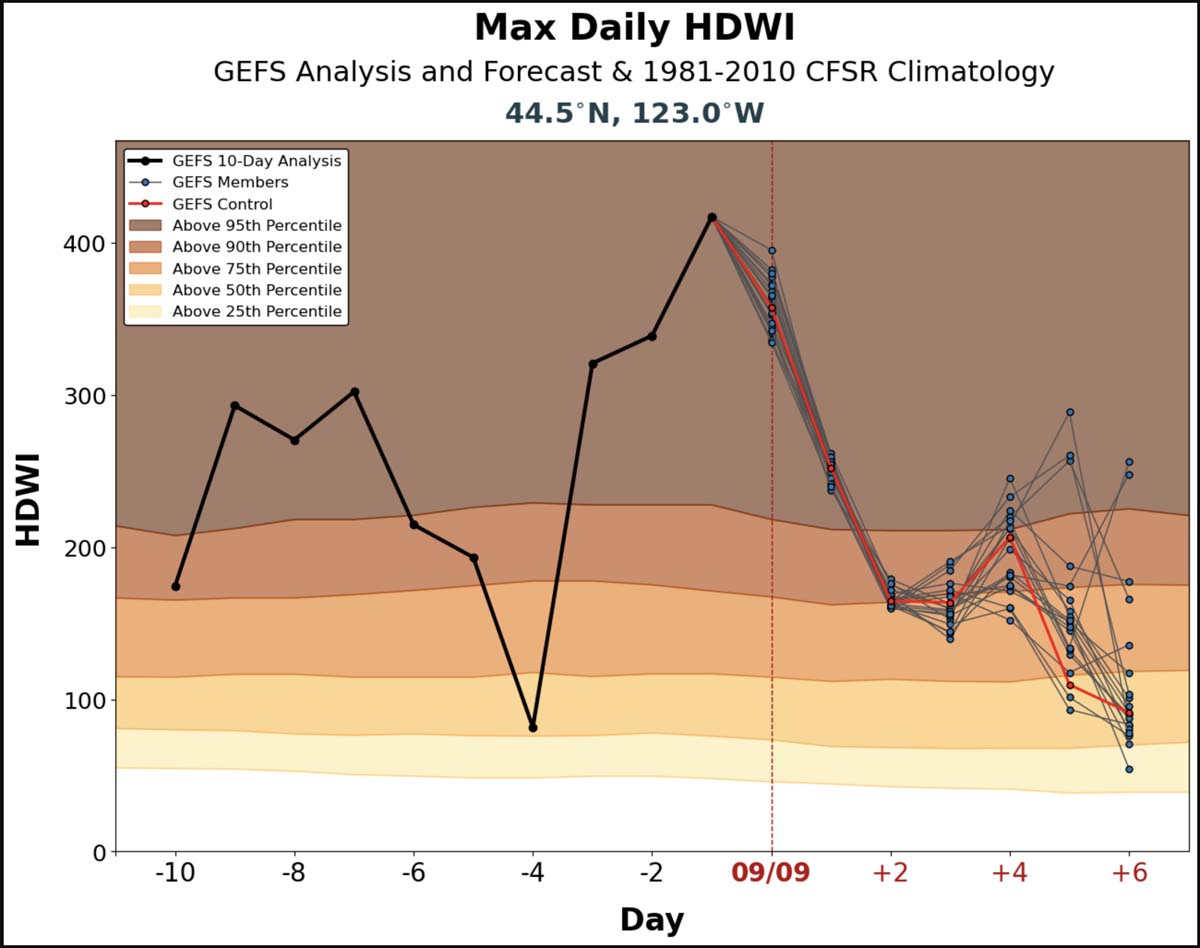
People may wonder why all of a sudden there were numerous very large fires in Oregon this week during what I am calling the Siege of ’20.
To a degree it didn’t exactly happen suddenly; some of the fires had been burning for weeks. Two of the largest, the Beachie Creek and Lionshead Fires, started from lightning on August 16.
The fires in Oregon were all heavily influenced by a historic extreme wind event on Monday, September 7 that brought 25 to 50 mph winds to many areas. Power lines and trees were toppled and any existing fires or just a spark could escalate into a raging fire quickly. Four fires east of Interstate 5 from Portland south to Eugene are each now larger than 100,000 acres. Just one 100,000-acre fire in Oregon is rare, but to have four at once is unprecedented in recent decades.
These fires and others in Oregon, California, and Colorado are crying out for firefighters, engines, helicopters, and air tankers but the fire suppression infrastructure available falls far short of the present need. This means that after the wind subsides, putting the blazes out quickly is not realistic. But when fires are moving with a strong wind, nothing can be done to stop them. Wednesday in southern California thousands of residents were under evacuation warnings due to the Bobcat Fire that was threatening seven high density communities in the wildland-urban interface of the Los Angeles area. Firefighters were only able to get access to one water-dropping helicopter, and for just part of the day. Normally there would have been a dozen helicopters assisting firefighters.
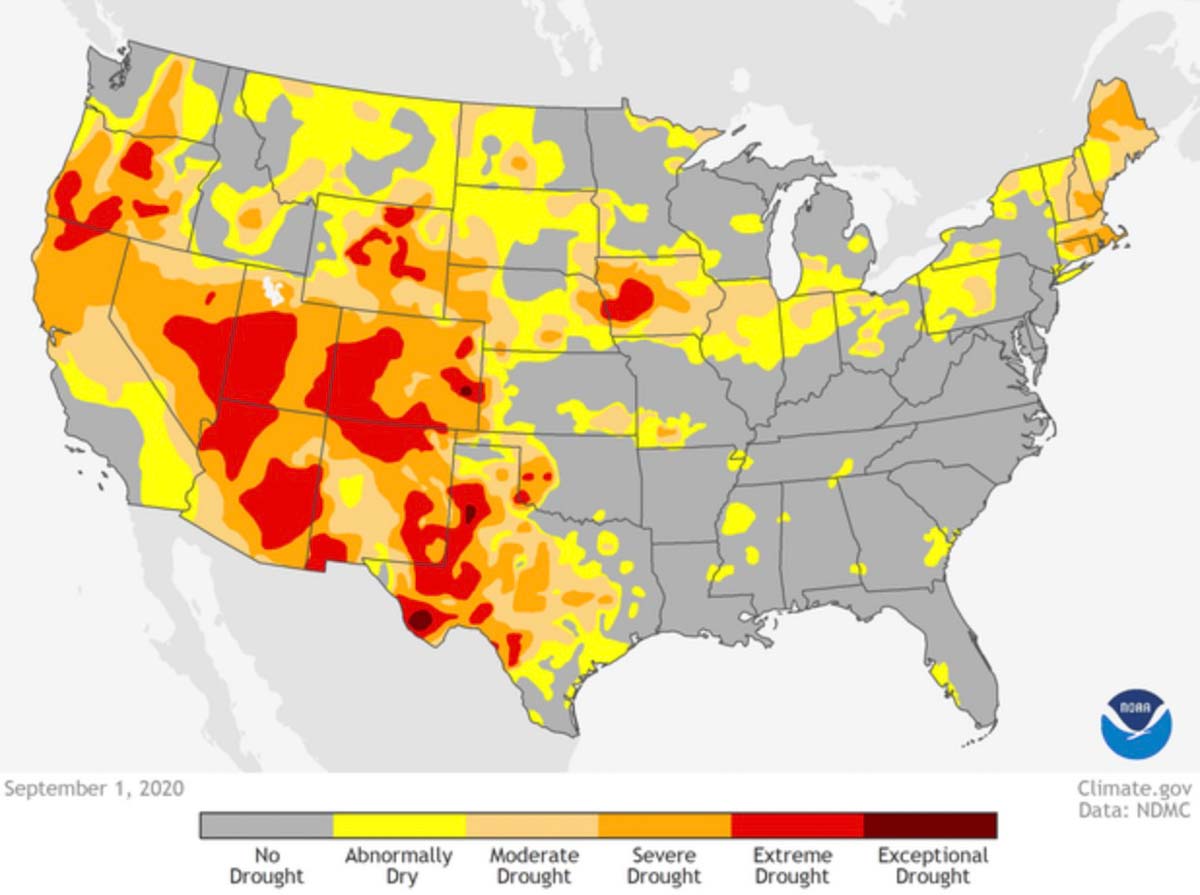
It was not just the extreme wind in Oregon and the shortage of firefighting resources that caused the fires to grow so quickly. Much of the state is in severe to extreme drought along with Nevada, Arizona, and Colorado. The northern two-thirds of California is in moderate to extreme drought and there has been little rain in many of these areas during the last two months. This results in the moisture content of the vegetation (or fuel) being low, making it more receptive to igniting and burning more quickly and intensely than if conditions were closer to average.
When fires are burning in vegetation that has not been visited by fire for decades, the amount of biomass and dead material that has accumulated increases the intensity of a fire as well as its resistance to control — literally adding fuel to the (next) fire. The areas where the four megafires are burning in the Cascade Mountain Range east of Interstate 5 have virtually no recorded history of fires.
The three components that dictate how a wildfire burns are weather, fuel (vegetation), and topography. There is one subcategory of weather that outranks all of the other factors for the amount of influence it has on how rapidly a fire moves — wind. Sophisticated models run on computers can calculate the projected rate of spread of a vegetation fire, or you could use the rule of thumb which works surprisingly well when you have dry fuels and strong winds. That “rule” says, the rate of spread of a fire is roughly equal to 10 percent of the average wind speed measured in an open area. Researchers have studied this. But keep in mind there are MANY variables that affect the spread of a fire, so this thumb rule is just a wild-ass guess, but it can be a starting point to get an idea of how fast a fire can move when it’s windy.
Using the rule of thumb on the fires that spread exponentially on September 7 in Oregon, if there was an average wind speed of 25 mph, that would spread a fire at about 2.5 miles each hour.
Here are more facts about the conditions that contributed to the Siege of ’20.
The Hot-Dry-Windy Index (HDW) on September 7 (see chart above) was well above the 95th percentile. It was much hotter, drier, and windy than average for the date and location, which means the conditions favored the rapid spread of fires. The HDW is very simple and only considers the atmospheric factors of heat, moisture, and wind. To be more precise, it is a multiplication of the maximum wind speed and maximum vapor pressure deficit (VPD) in the lowest 50 or so millibars in the atmosphere. The products, displayed as charts, show the index for the preceding 10 days and the forecast for the next 7 days.
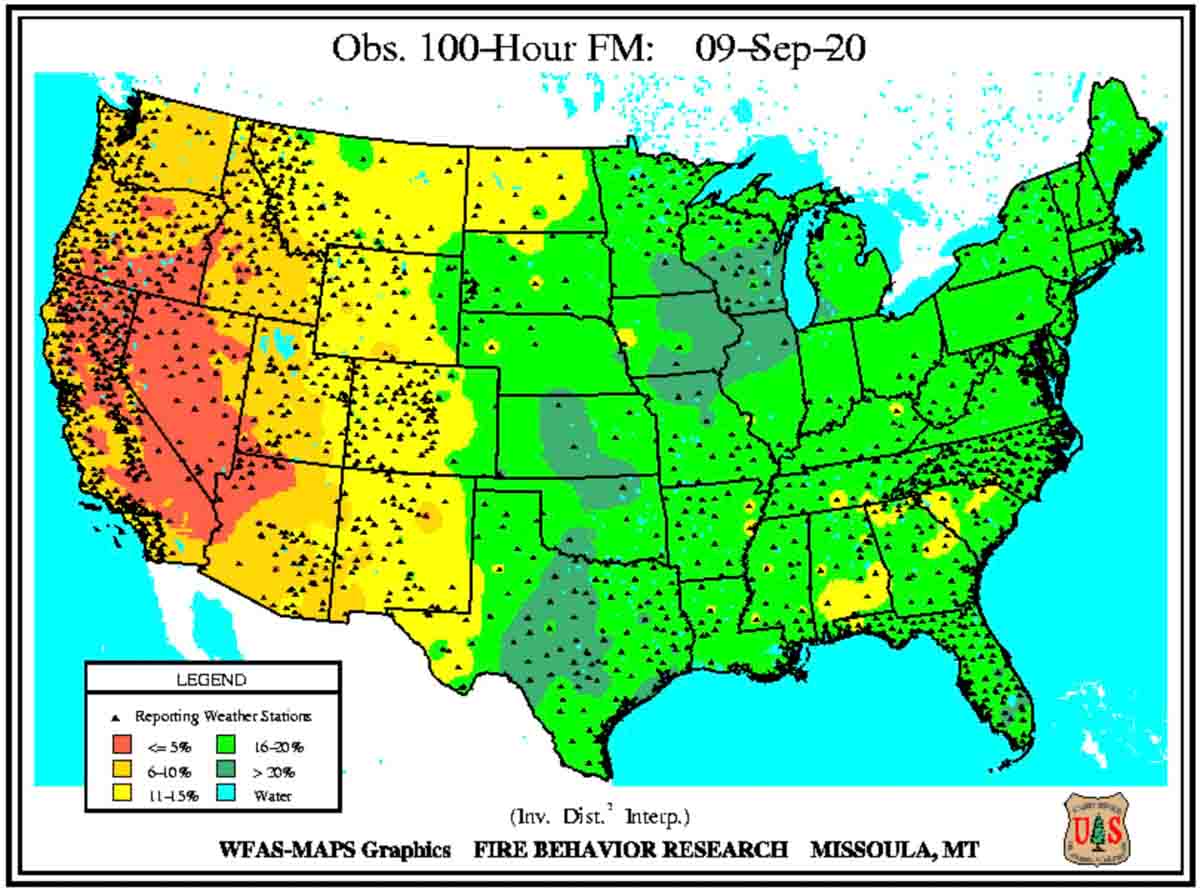
Dead vegetation absorbs moisture from humid air, or dries out when the humidity is low, and this affects the rate of spread of a wildfire. The moisture content of the dead vegetation in Oregon this week, the 100-hour time lag fuel (1″ to 3″ in diameter), has been low; less than 10 percent, and in some areas, below 5 percent. The lower the fuel moisture, the faster a fire spreads. Kiln-dried lumber is usually at about 12 percent.
If you read these 800 words, congratulations! Send us a check for $50 and and you’ll receive a Continuing Education Credit. (kidding)

